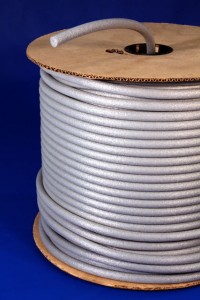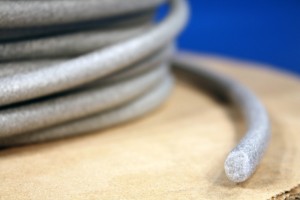In plays, television and movies, actors and actresses are most often the ones credited with a show’s success. But for every celebrity or household name, there are dozens of people behind the scenes, working hard to ensure the seamless execution of a performance. This is also how the world of construction works. We see the beautiful glass windows on buildings and feel the strength of sidewalks under our feet, but there are many materials we never see in construction projects that play a vital role in a structure’s longevity and integrity. Polyethylene foam backer rod is one of those materials.

Used in the construction of homes, sidewalks and masonry, backer rod, also known as expansion joint filler, increases the performance of every application it is used in. Because of changes in ground angle, weight distribution, weather and its relative inflexibility, concrete is often divided into tiles or sections to cover an entire area. Between these tiles are small crevasses or joints that allow room for the concrete to contract, expand, shift and settle. Left open and uncovered however, moisture will get into the concrete movement joints and slowly fracture and damage the structure. The answer to this is to fill the joint with flexible, waterproof sealant. This is where expansion joint foam steps in. Backer rod is a strip of foam, often cylindrical, that is inserted between joints before caulk or sealant is applied. The inclusion of expansion joint filler material does not allow sealant to form a three-point bond to the slabs and base surface, maintaining flexibility and preventing damage to the substrate. Foam Factory, Inc. stocks this essential building material in a variety of diameters and roll lengths for completing any project, large or small.
Because filling an entire joint top to bottom will bond the two sections of the concrete and the substrate layer, movement will pull and damage the base and concrete, rather than allowing the filler to flex freely. These sealants are also fairly expensive and filling every joint completely would be an overuse of materials. To prevent damage and save on costs, sections of smooth, closed-cell polyethylene filler are inserted into the gap. Compressed into the joint, the foam filler fills a majority of the space with a compressible material that will not absorb moisture. Sealer is applied into the joint atop the backer rod, which does not bond to the caulk. This forms a two-point lateral bond, making for a watertight seal that will be able to move along with the concrete while using much less sealant.
This same process is replicated similarly in log home construction. Foam backer rod is inserted into the spaces between every log, filling the cracks with foam insulation to protect against heat, cold and insects. A sealant is then applied over the backer rod which, again, only allows a two-point bond for flexibility. In log homes, this process is called “chinking” and is used to tailor the aesthetics of a home in addition to increasing its efficiency. Gap filler can even be used with sealant to fill cracks and splits in a log to prevent moisture from entering and damaging the structure.

Foam Factory manufactures the most commonly used foam rod sizes, spooled up to 4,000 feet in a single roll for the smallest 1/4 inch diameter size. The largest, 1-1/4 inch spooled diameter is available in 400 foot rolls, with six different diameters and roll lengths between the two sizes. Since backer rod is trimmed to fit within joints, continuous sections are rarely needed and multiple rolls can be ordered for the largest jobs. For smaller jobs, Foam Factory also offers spooled half rolls and will even take orders by the lineal foot for individuals who know the exact amount of material they need. For any joints or cracks larger than 1-1/4 inches, unspooled cylinders from 1-1/2 inches up to 6 inches in diameter are available in 17, 35 and 70 inch lengths. Simply put, Foam Factory stocks the sizes of backer rod needed to complete any job.
The next time you’re walking over a sidewalk in the spring, undamaged from the winter’s freezing and thawing or sitting comfortably in a draft-free log home, remember that it’s not always the headlining act that makes the biggest difference, but the things behind the scenes that manage to fill in all of the gaps.


I need about 300 l. F. Of 1/4″ poly joint backer rod. Dealer in southern california?
This can be ordered through our website under polyethylene cylinders. Sorry, our only location is in southeast Michigan.